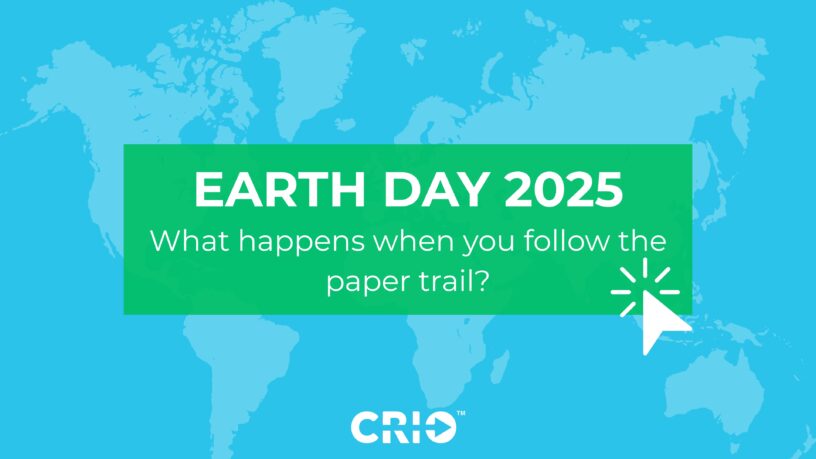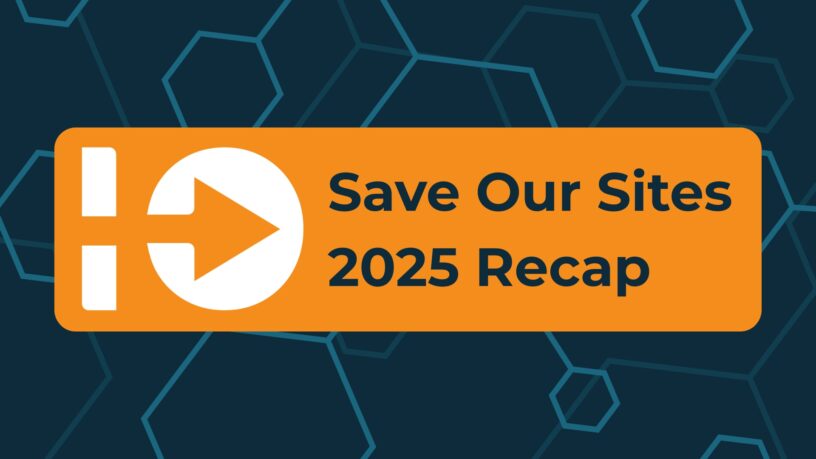What Happens When You Follow the Paper Trail?

When we think about the environmental impact of clinical trials, we often focus on laboratory waste, shipping emissions, or energy-intensive processes. But one major factor is often overlooked, paper. Despite rapid digital transformation in healthcare, most clinical trials still rely on paper source binders, where sites manually document patient data before transcribing it into an electronic data capture (EDC) system.
To accommodate this process, research sites create paper-based worksheets to structure data collection according to protocol requirements. These binders grow throughout the study, accumulating hundreds or even thousands of pages per trial. Once the study is complete, these documents are archived for years, taking up space in storage facilities and serving little purpose beyond regulatory compliance. The paper trail doesn’t just stop at data entry, it lingers for years, costing money to store, manage, and eventually dispose of.
The Scale of Paper Use in Clinical Trials
If we only looked at the top 30 pharmaceutical companies, each running an average of 23 trials per year over the past 20 years, the sheer scale of paper use becomes impossible to ignore. Large-scale studies generate at least 225,000 pages per trial, while mid-sized studies typically produce 80,000 pages or more. Multiply that across the industry, and clinical trials are consuming an extraordinary amount of paper, most of which will sit in storage long after the study is complete¹.
To put it in perspective:
- Over 200,000 trees have been cut down over the past 20 years just to support paper-based clinical trials².
- Those trees, if left standing, could have absorbed 9.6 million pounds of CO₂ per year, equivalent to removing 850 cars from the road annually³.
- They would have provided oxygen for 400,000 people per year, roughly the population of Miami, FL⁴.
- They could have filtered 20 million gallons of water annually, enough to fill 30 Olympic-sized swimming pools⁵.
The Devastating Impact of Deforestation
Beyond the environmental toll, cutting down 200,000 trees has displaced 400,000 to 1 million animals from their natural habitats⁶. Many of these species rely on dense forests for shelter, food, and survival. Studies suggest that at least 50% of displaced animals do not survive, meaning that 200,000 to 500,000 animals likely died due to habitat destruction, all for paper source binders that often end up in long-term storage⁷. And this only accounts for the top 30 pharmaceutical companies—when considering the entire industry, the true impact is even greater.
The Ironic Truth: Paper-Based Trials Cost More
What makes this all even more frustrating? Running a trial on Central eSource is actually cheaper than using paper. Sites spend less time on documentation, monitoring costs decrease, and studies run more efficiently. Sponsors and CROs aren’t just wasting trees, they’re wasting money.
The Future of Clinical Trials
With risk-based monitoring, AI-driven data analysis, and automation reshaping clinical research, it’s time to leave paper behind. Central eSource ensures data integrity, reduces inefficiencies, and eliminates unnecessary environmental harm.
For sponsors and CROs still relying on paper, the time to act is now. Because at the end of the day, a study should leave a lasting impact on medicine, not on the environment.
Sources
¹ Tufts Center for the Study of Drug Development
² Environmental Paper Network (EPN)
³ USDA Forest Service (carbon sequestration) & EPA (vehicle emissions)
⁴ Arbor Day Foundation (oxygen production per tree)
⁵ TreePeople & American Forests (water filtration)
⁶ World Wildlife Fund (WWF) on deforestation and animal displacement





